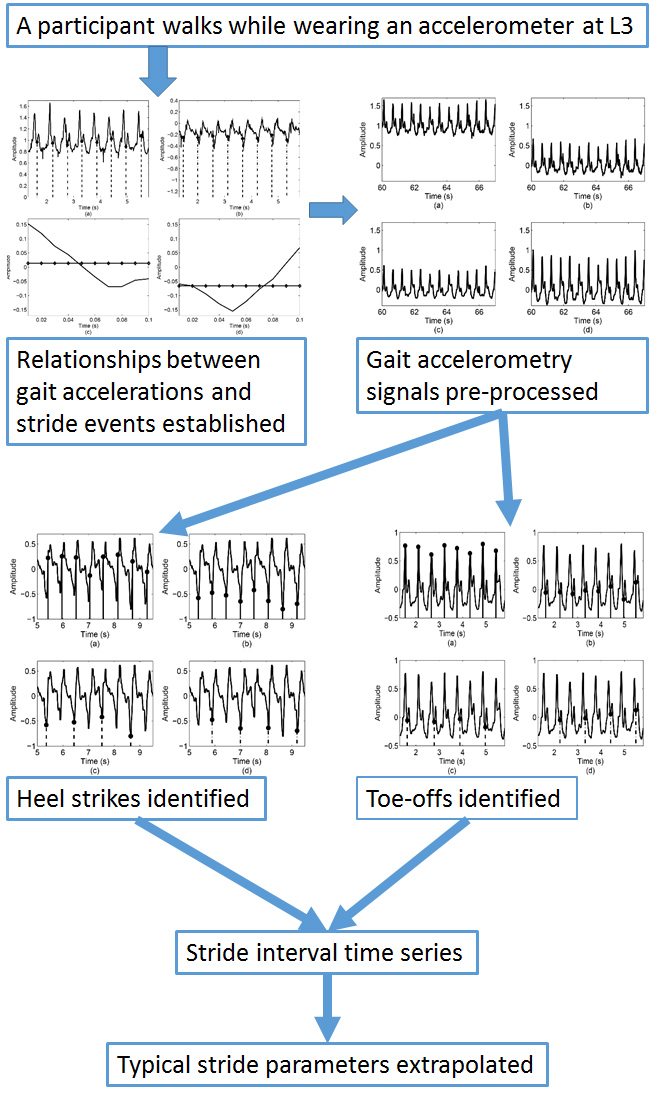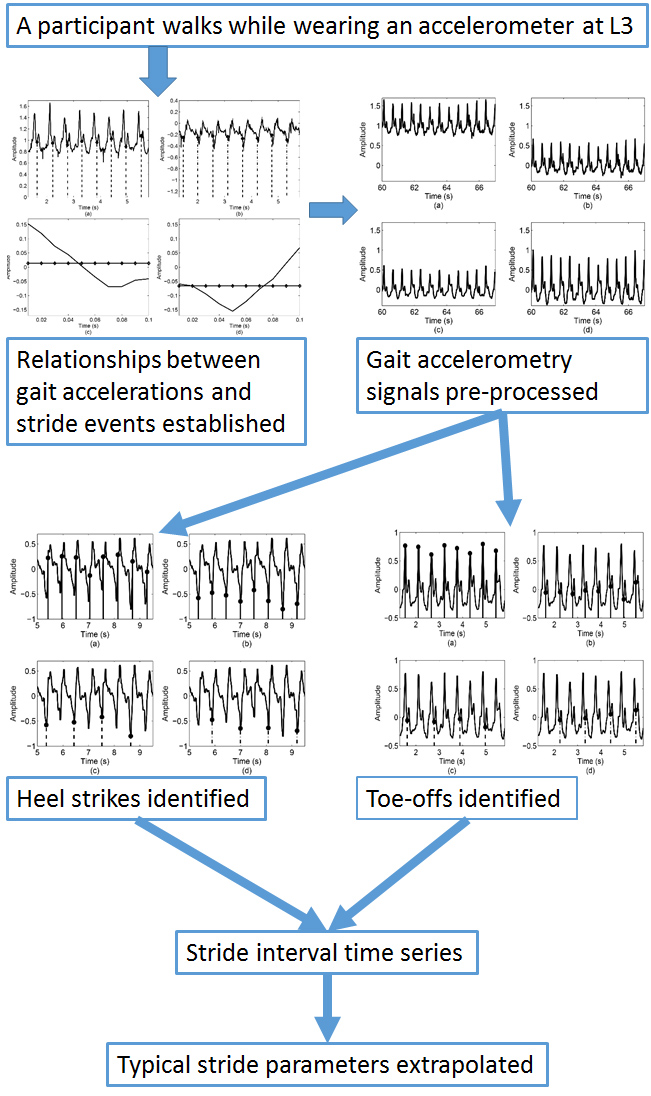
Objective: Evaluating stride events can be valuable for understanding the changes in walking due to aging and neurological diseases. However, creating the time series necessary for this analysis can be cumbersome. In particular, finding heel contact and toe-off events which define the gait cycles accurately are difficult.
Method: We proposed a method to extract stride cycle events from tri-axial accelerometry signals. We validated our method via data collected from 14 healthy controls, 10 participants with Parkinson’s disease and 11 participants with peripheral neuropathy. All participants walked at self-selected comfortable and reduced speeds on a computer-controlled treadmill. Gait accelerometry signals were captured via a tri-axial accelerometer positioned over the L3 segment of the lumbar spine. Motion capture data were also collected and served as the comparison method.
Results: Our analysis of the accelerometry data showed that the proposed methodology was able to accurately extract heel and toe contact events from both feet. We used t-tests, ANOVA and mixed models to summarize results and make comparisons. Mean gait cycle intervals were the same as those derived from motion capture and cycle-to-cycle variability measures were within 1.5%. Subject group differences could be identified similarly using measures with the two methods.
Conclusions: A simple tri-axial acceleromter accompanied by a signal processing algorithm can be used to capture stride events.
Clinical Impact: The proposed algorithm enables the assessment of stride events during treadmill walking, and is the first step towards the assessment of stride events using tri-axial accelerometers in real-life settings.

